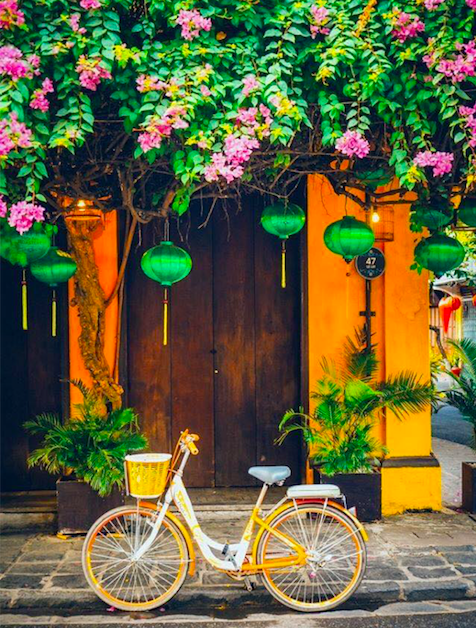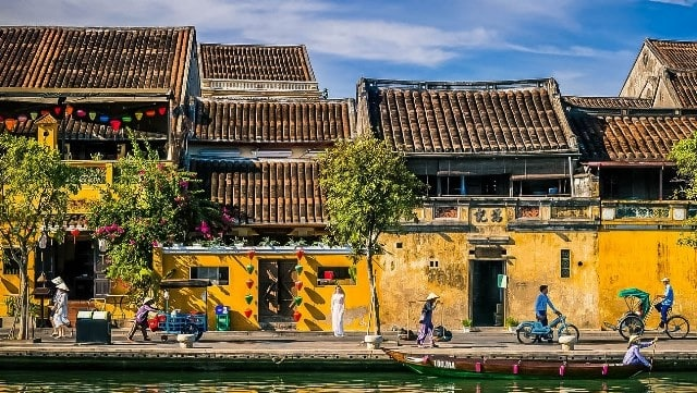
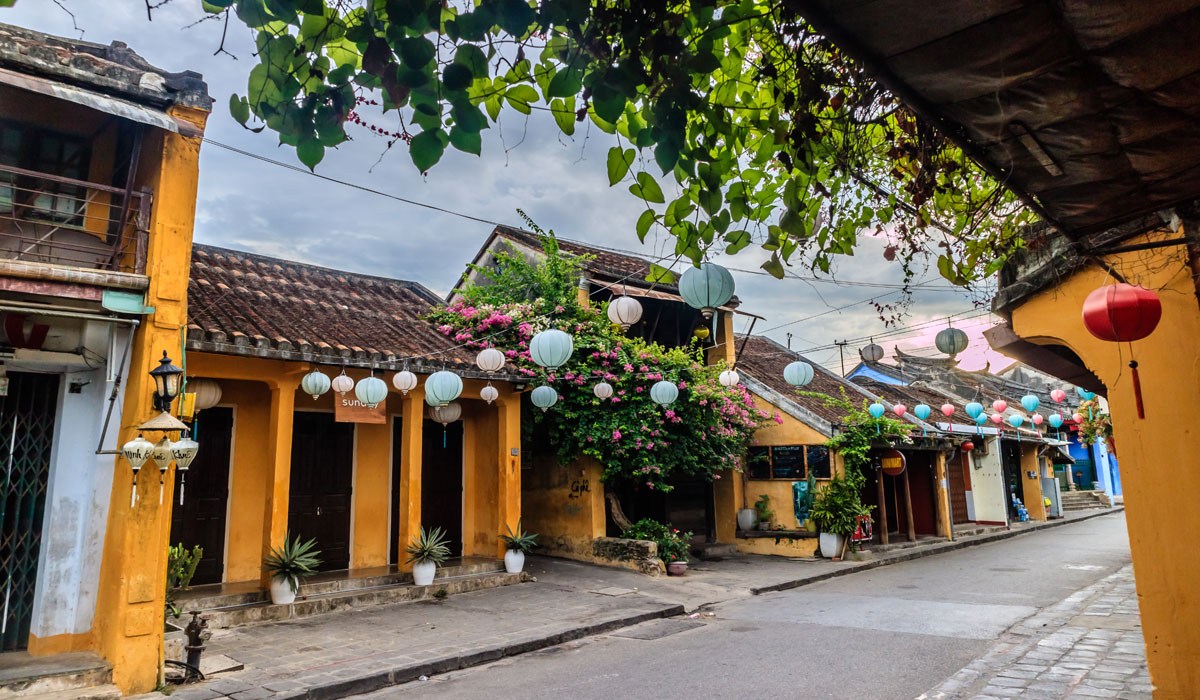 Hoi An - where life is so calm. Hoi An - where it seems that the involuntary flow of time cannot bury the ancient atmosphere. The old tiled roofs covered with moss, the streets filled with the red color of lanterns, the intricately carved diaphragms, all brings us back to a world of a few hundred years ago.
Hoi An - where life is so calm. Hoi An - where it seems that the involuntary flow of time cannot bury the ancient atmosphere. The old tiled roofs covered with moss, the streets filled with the red color of lanterns, the intricately carved diaphragms, all brings us back to a world of a few hundred years ago.
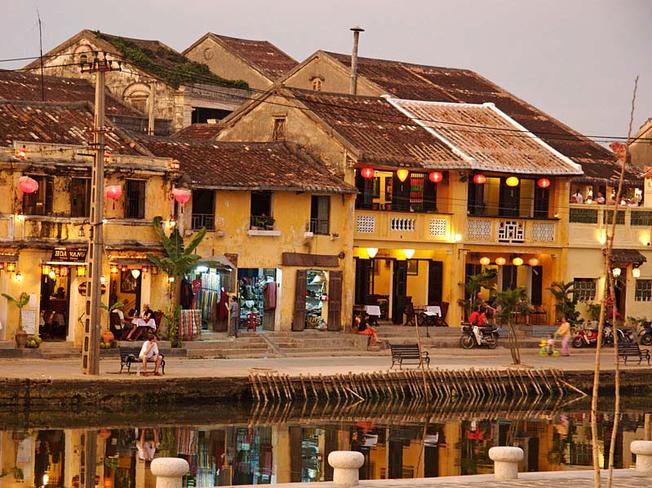 Hoi An Ancient Town is an ancient town located downstream of the Thu Bon River, in the coastal plain of Quang Nam province, Vietnam, about 30 km south of Da Nang city.
Hoi An Ancient Town is an ancient town located downstream of the Thu Bon River, in the coastal plain of Quang Nam province, Vietnam, about 30 km south of Da Nang city.
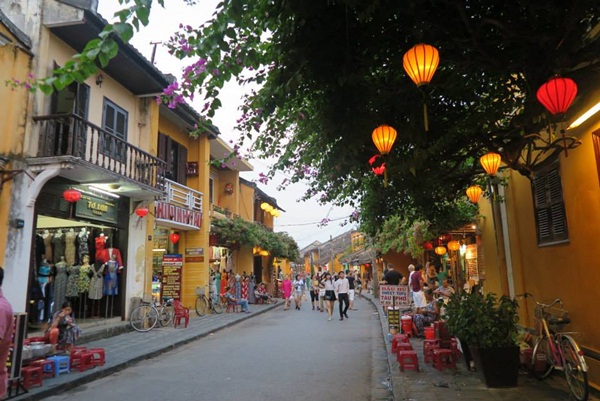 Hoi An is a city in Quang Nam province with many old towns built in the 16th century and still exists almost intact to this day. In ancient Western documents, Hoi An is called Faifo. Hoi An Ancient Town has been recognized as a UNESCO World Heritage Site since 1999. This is a place that attracts a lot of tourists from Da Nang - Hoi An.
Hoi An is a city in Quang Nam province with many old towns built in the 16th century and still exists almost intact to this day. In ancient Western documents, Hoi An is called Faifo. Hoi An Ancient Town has been recognized as a UNESCO World Heritage Site since 1999. This is a place that attracts a lot of tourists from Da Nang - Hoi An.
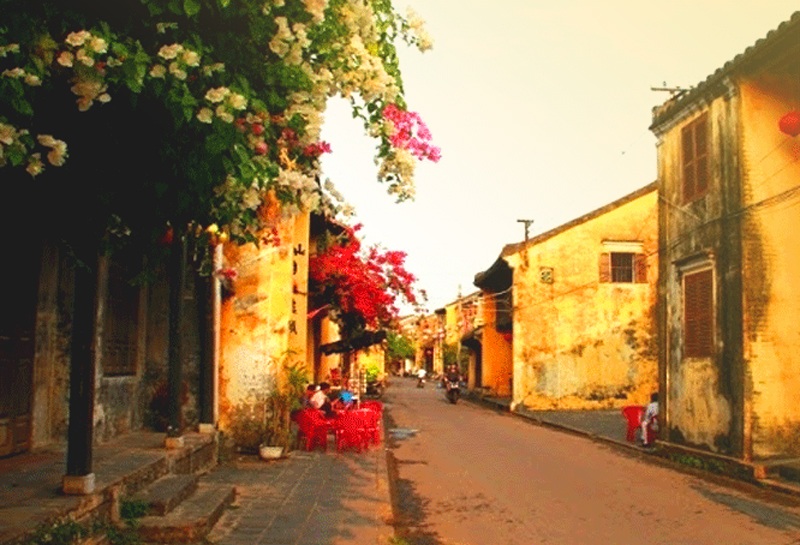

 As a unique type of traditional Southeast Asian port town in Vietnam, rare in the world, Hoi An has kept almost intact more than a thousand architectural monuments such as streets, houses, assembly halls, communal houses and pagodas. , temples, ethnic churches, ancient wells, ancient tombs... Coming here, tourists from Hanoi to Da Nang will have the opportunity to admire the architecture that has both traditional Vietnamese artistic nuances and shows the social exchange. cultural integration with Eastern and Western countries.
As a unique type of traditional Southeast Asian port town in Vietnam, rare in the world, Hoi An has kept almost intact more than a thousand architectural monuments such as streets, houses, assembly halls, communal houses and pagodas. , temples, ethnic churches, ancient wells, ancient tombs... Coming here, tourists from Hanoi to Da Nang will have the opportunity to admire the architecture that has both traditional Vietnamese artistic nuances and shows the social exchange. cultural integration with Eastern and Western countries.
 Most of the houses here are traditional architecture dating from the 17th to 19th centuries, located along narrow streets. Interspersed between townhouses, religious and belief architectural works demonstrate the process of formation, development and even decline of the city. Hoi An is also a land with many imprints of cultural mixing and interference. Assembly halls, temples bearing traces of the Chinese are located next to traditional Vietnamese townhouses and houses with French architectural style. In addition to the cultural values through architectural works, Hoi An also preserves a rich and diverse intangible culture. The daily life of the inhabitants of the old town with its customs, beliefs, folk art, and cultural festivals is still being preserved and developed. Hoi An is considered as a living museum of architecture and urban lifestyle.
Most of the houses here are traditional architecture dating from the 17th to 19th centuries, located along narrow streets. Interspersed between townhouses, religious and belief architectural works demonstrate the process of formation, development and even decline of the city. Hoi An is also a land with many imprints of cultural mixing and interference. Assembly halls, temples bearing traces of the Chinese are located next to traditional Vietnamese townhouses and houses with French architectural style. In addition to the cultural values through architectural works, Hoi An also preserves a rich and diverse intangible culture. The daily life of the inhabitants of the old town with its customs, beliefs, folk art, and cultural festivals is still being preserved and developed. Hoi An is considered as a living museum of architecture and urban lifestyle.
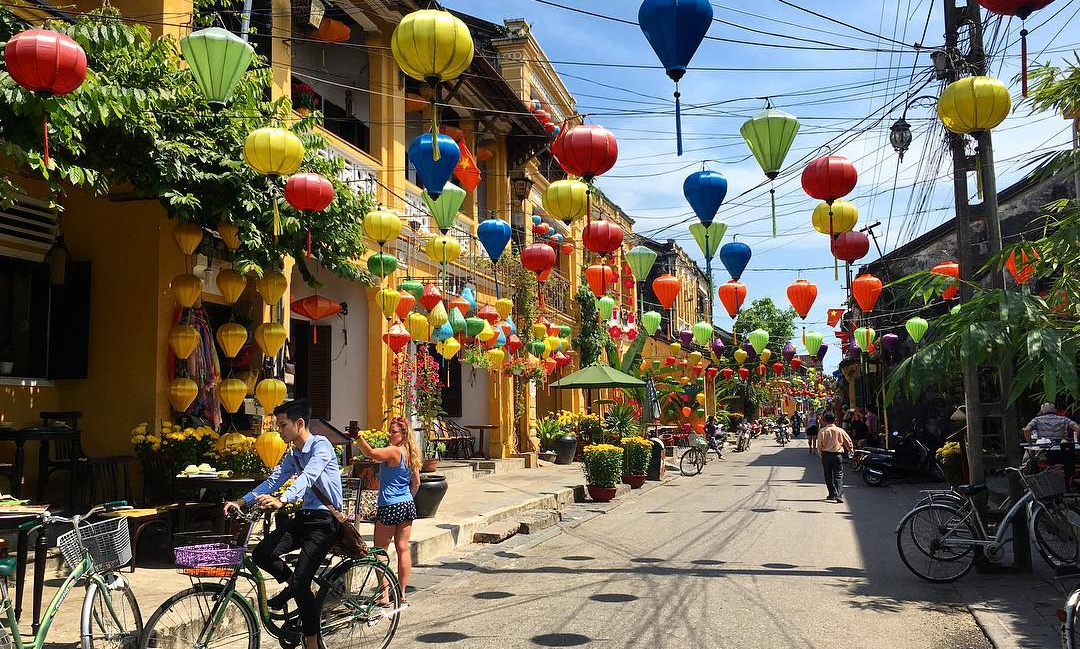
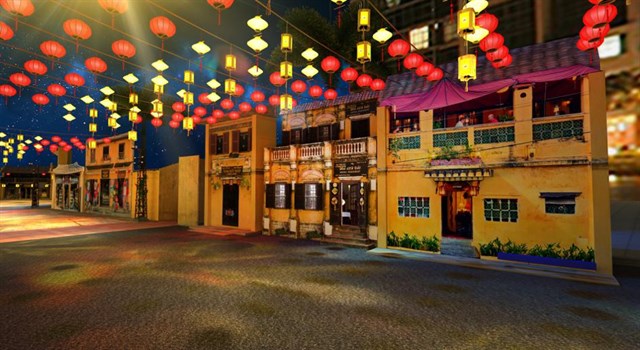 In addition to the cultural values through diverse architecture, Hoi An also preserves many intangible cultural activities with cultural festivals being preserved and promoted along with traditional craft villages, traditional dishes. cuisine… makes Hoi An increasingly an attractive destination for tourists from all over the world
In addition to the cultural values through diverse architecture, Hoi An also preserves many intangible cultural activities with cultural festivals being preserved and promoted along with traditional craft villages, traditional dishes. cuisine… makes Hoi An increasingly an attractive destination for tourists from all over the world
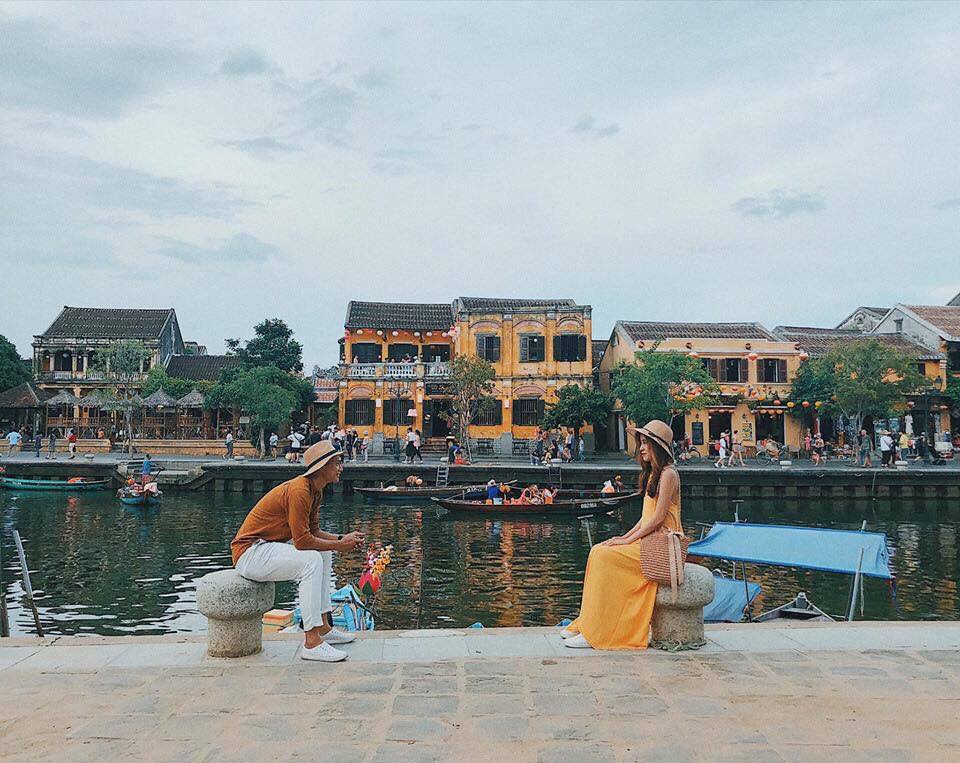 Hoi An ancient town always has its own beauty in every street corner, every roof, and on small streets. Coming here, visitors can feel the warmth in each dish, from the friendly and close smiles of the people. Even for the plants, the space here is also attractive to visitors.
Hoi An ancient town always has its own beauty in every street corner, every roof, and on small streets. Coming here, visitors can feel the warmth in each dish, from the friendly and close smiles of the people. Even for the plants, the space here is also attractive to visitors.

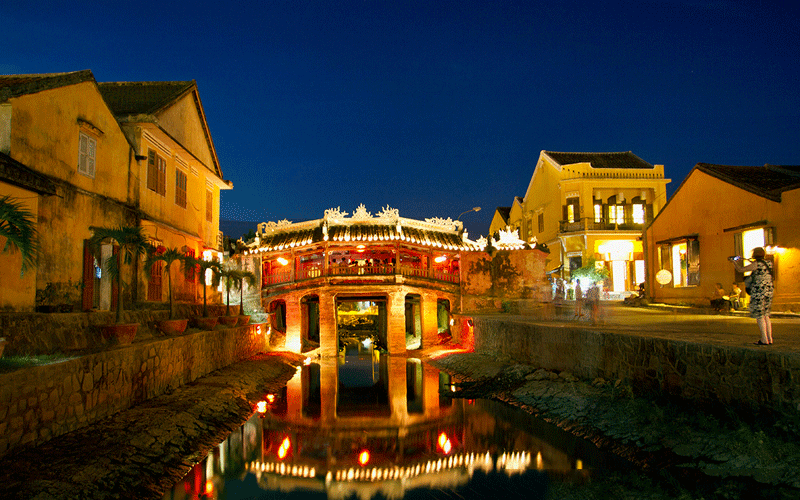
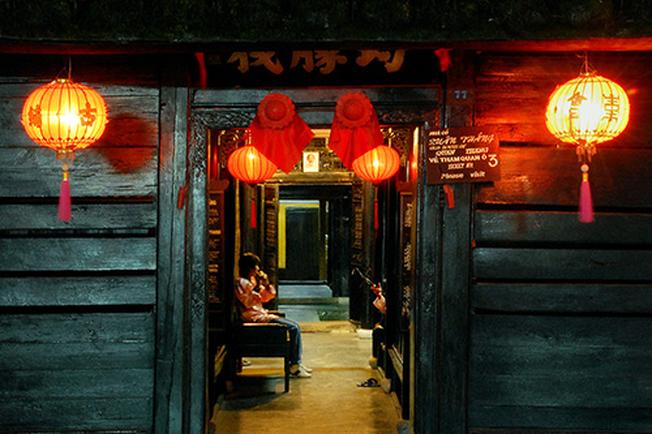 Hoi An is famous for its traditional and harmonious architectural beauty of houses, walls and roads. Along with many ups and downs of history, Hoi An ancient town still retains the ancient beauty of silence and moss in each tile roof, brick, tree line, etc. , the authenticity of the local people.
Hoi An is famous for its traditional and harmonious architectural beauty of houses, walls and roads. Along with many ups and downs of history, Hoi An ancient town still retains the ancient beauty of silence and moss in each tile roof, brick, tree line, etc. , the authenticity of the local people.
 The houses in Hoi An are mostly made in the form of two roofs, most of the main houses and the outbuildings do not share one roof, but two adjacent roof folds. There are very few cases of government roofs on the outbuildings. In contrast, most of the bridge houses are roofed with four roofs. On the overall plan, the front house, the bridge house and the back house are covered with separate roofs. Tile in Hoi An is a type of tile made from earth, thin, rough, square in shape, about 22cm each side and slightly curved. When roofing, people first arrange a row of tiles facing up and then a row of tiles facing down.
The houses in Hoi An are mostly made in the form of two roofs, most of the main houses and the outbuildings do not share one roof, but two adjacent roof folds. There are very few cases of government roofs on the outbuildings. In contrast, most of the bridge houses are roofed with four roofs. On the overall plan, the front house, the bridge house and the back house are covered with separate roofs. Tile in Hoi An is a type of tile made from earth, thin, rough, square in shape, about 22cm each side and slightly curved. When roofing, people first arrange a row of tiles facing up and then a row of tiles facing down.
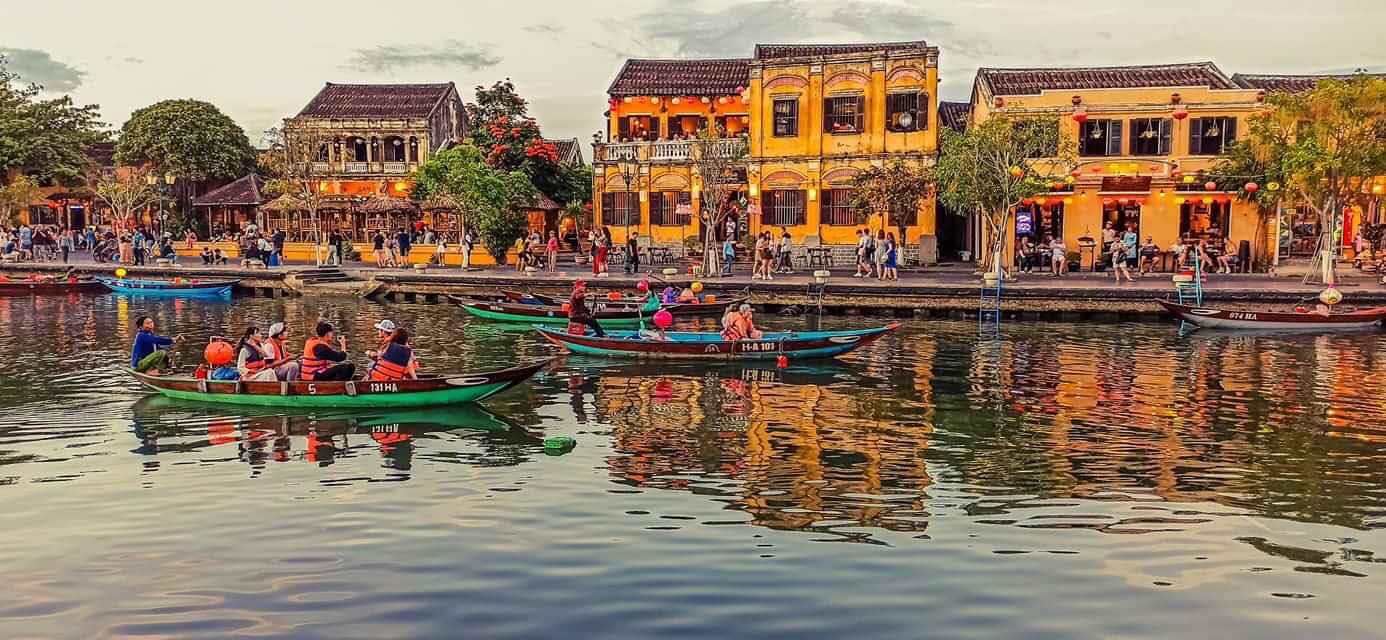 The most popular type of housing in Hoi An is the one or two-storey townhouse with the characteristic of narrow width and very long depth creating a tubular house. The main materials used to build houses here have high strength and durability due to the harsh climate and annual floods in this area. Usually, houses have a wooden frame structure, with brick walls separating the two sides. The average campus of the houses is about 4 to 8 meters wide, about 10 to 40 meters deep, varying from street to street. The common layout of the houses here includes: sidewalk, veranda, main house, outbuilding, veranda, bridge and courtyard, veranda, three-compartment house, back garden.
The most popular type of housing in Hoi An is the one or two-storey townhouse with the characteristic of narrow width and very long depth creating a tubular house. The main materials used to build houses here have high strength and durability due to the harsh climate and annual floods in this area. Usually, houses have a wooden frame structure, with brick walls separating the two sides. The average campus of the houses is about 4 to 8 meters wide, about 10 to 40 meters deep, varying from street to street. The common layout of the houses here includes: sidewalk, veranda, main house, outbuilding, veranda, bridge and courtyard, veranda, three-compartment house, back garden.
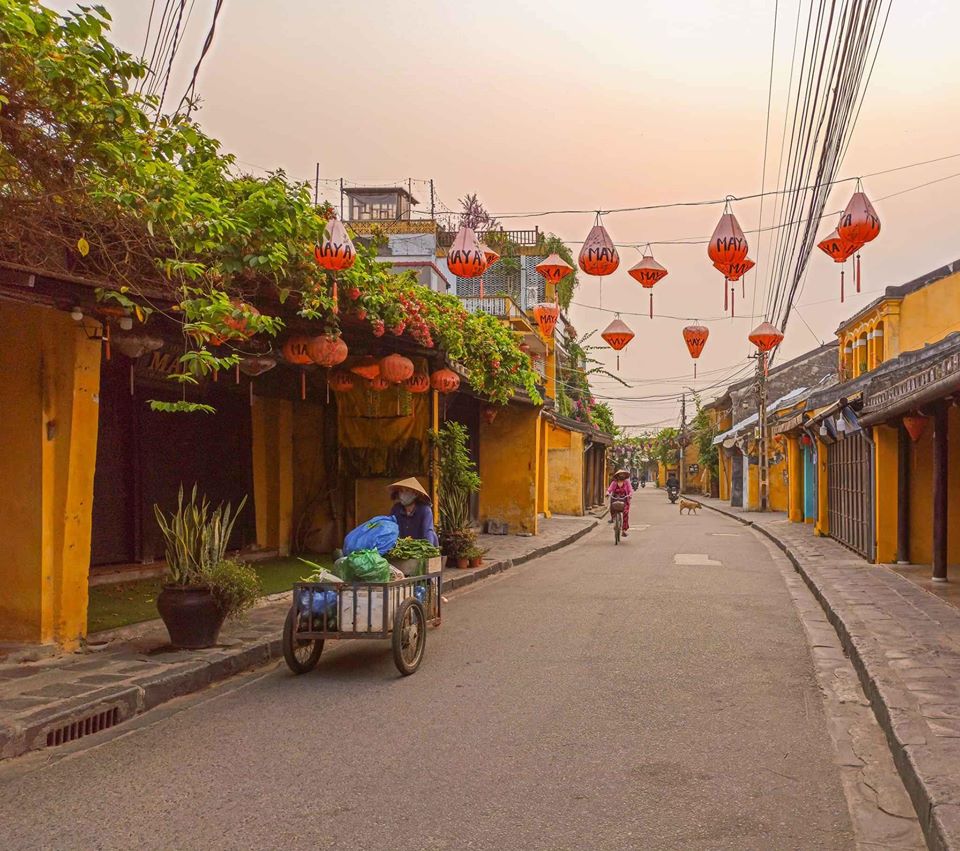 Streets in the Old Quarter are arranged horizontally along a chessboard style with short and beautiful streets, winding, embracing houses. Walking through each of those small and peaceful streets, visitors can not only enjoy delicious food but also see a part of the daily life of the people of Hoi An, a peaceful and simple life. weird.
Streets in the Old Quarter are arranged horizontally along a chessboard style with short and beautiful streets, winding, embracing houses. Walking through each of those small and peaceful streets, visitors can not only enjoy delicious food but also see a part of the daily life of the people of Hoi An, a peaceful and simple life. weird.
 Tan Ky ancient house is an old house honored to become a National Heritage and the only place to welcome Heads of State, politicians at home and abroad. The old house is a combination of Chinese, Japanese and Vietnamese architecture. With the typical tubular architecture of the ancient city, this place consists of two overlapping horizontal bars, representing the heavens and the people and five vertical bars representing the five elements. The harmonious architecture of the house speaks of the dream of harmony between people and nature in Hoi An town.
Tan Ky ancient house is an old house honored to become a National Heritage and the only place to welcome Heads of State, politicians at home and abroad. The old house is a combination of Chinese, Japanese and Vietnamese architecture. With the typical tubular architecture of the ancient city, this place consists of two overlapping horizontal bars, representing the heavens and the people and five vertical bars representing the five elements. The harmonious architecture of the house speaks of the dream of harmony between people and nature in Hoi An town.
